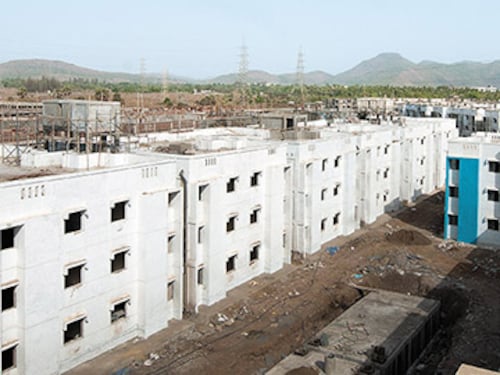Bikram Sen: Residential Investments in Small Towns are Safer
Easy permits, low-frills and latent demand make them lucrative investment targets


At the outset, I’d like to state that investing in real estate is a high-risk-high-reward proposition. There are several ways to invest in real estate. One can invest in commercial property like an office block or a mall. Then there are REITs that typically give a low yield from the rentals collected and offer scope for capital appreciation. And finally, we have residential real estate, which is the safest. They could be in an apartment, a condominium or a gated community.
Why are they the safest? Two reasons: The developer sells his stock well before construction is completed. The developers’ equity only goes in for land and permissions and after that construction finance is available and housing finance is available.So, if I can get a project where the cost of land and permissions is no more than 20 percent, I know I have made the first right move. Now this 20 percent is equity where the developer has his skin in the game. The balance 80 percent is from house purchasers, who are increasingly availing of housing finance at between 9.5 and 11.5 percent, and so we are talking of G-Sec plus 1 or 2 percent. Construction finance comes in at a slightly higher rate but it is availed only for a fraction of the total cost as the developer finances the rest through slab-wise payments from the same purchaser. This, when compared to financing a mall or an office complex, is very easy.
This equation changes in larger cities. In a place like Mumbai, the cost of land and permissions comes to 70 percent. So, when a real estate fund is investing in a project in Mumbai, they are taking a call on the value of the land going up. This is a highly speculative one and those are best avoided.
Now, we come to the question as to why small towns? For starters, there is a lot of latent demand. These cities are small and the inner parts of the city are bursting at their seams. People are dying to move out. If a developer can give them the option of commuting for 20 minutes and getting to a better house, there are a lot of takers for it.
Don’t look at small towns alone. Even in Mumbai, when you have houses priced at Rs 8,000 to Rs 10,000 a sq ft, or in Bangalore, where you have houses at Rs 2,500 to Rs 4,000 a sq ft, they sell well. Across the country, if you price it at Rs 2,500 and have a unit size of 750 sq ft, you’ve hit the sweet spot. At that price point, the demand in the country is large.
There are other reasons why it is a safe bet. The projects we work on in small towns are small projects. For these, it is easy to acquire land and getting permissions is not a very time-consuming affair. These are buildings that are ground plus, say, seven or eight floors, and so constructing them is relatively easy and not too expensive. There is no need to dig too much for basement parking and so that doesn’t add to the cost as well.
That said, this is also back-breaking work. How does one go to a small town and decide which project to invest in? How does one know where there is a genuine demand? How does one assess the track record of the developer? These are all difficult questions to answer for someone who doesn’t know the town. For us it is easy since we work with our sponsor, DHFL, who has a presence in these towns and funds projects there.
Also, for a fund, our investments are not too large. These projects can’t absorb the Rs 100 crore to Rs 200 crore investments that projects in larger cities can take. Here, we work through Dewan Housing Finance, our sister company, to identify projects and developers who have a good track record. After investing in these, we have noticed that it is possible to get a 30 percent IRR (internal rate of return). And these work well for returns as the projects are completed in three years. So I can return money to my investors quickly.
That said, some small towns have shown a tendency to overheat in the last year. For instance, Pune has seen a large run-up in the last year and so I’d stay away for the time being. Indore also seems to be overheating as people think the Mumbai-Delhi freight corridor that passes through it will result in a lot of price appreciation. I’m not so sure about that one.
(As told to Samar Srivastava)
First Published: Jan 20, 2014, 07:22
Subscribe Now